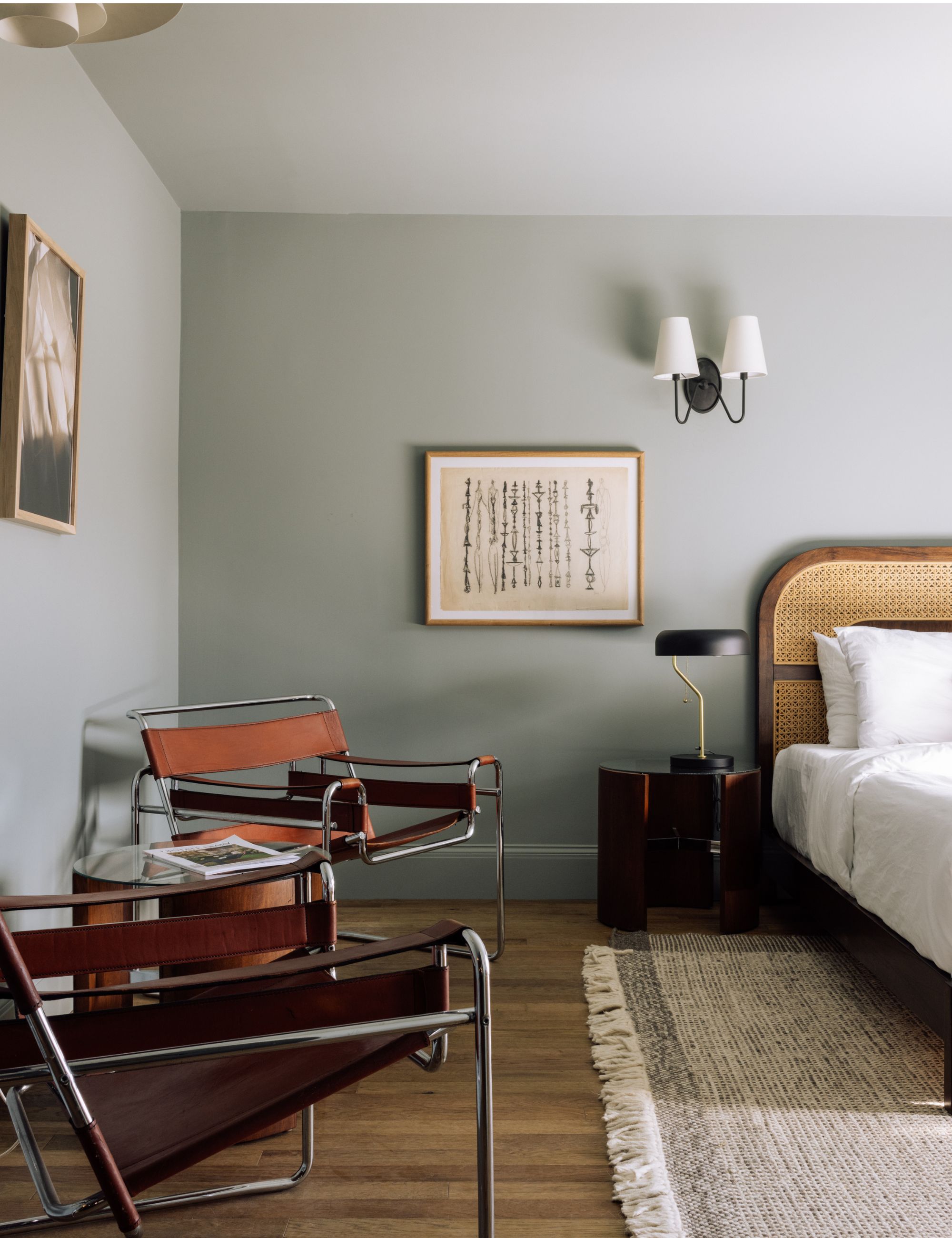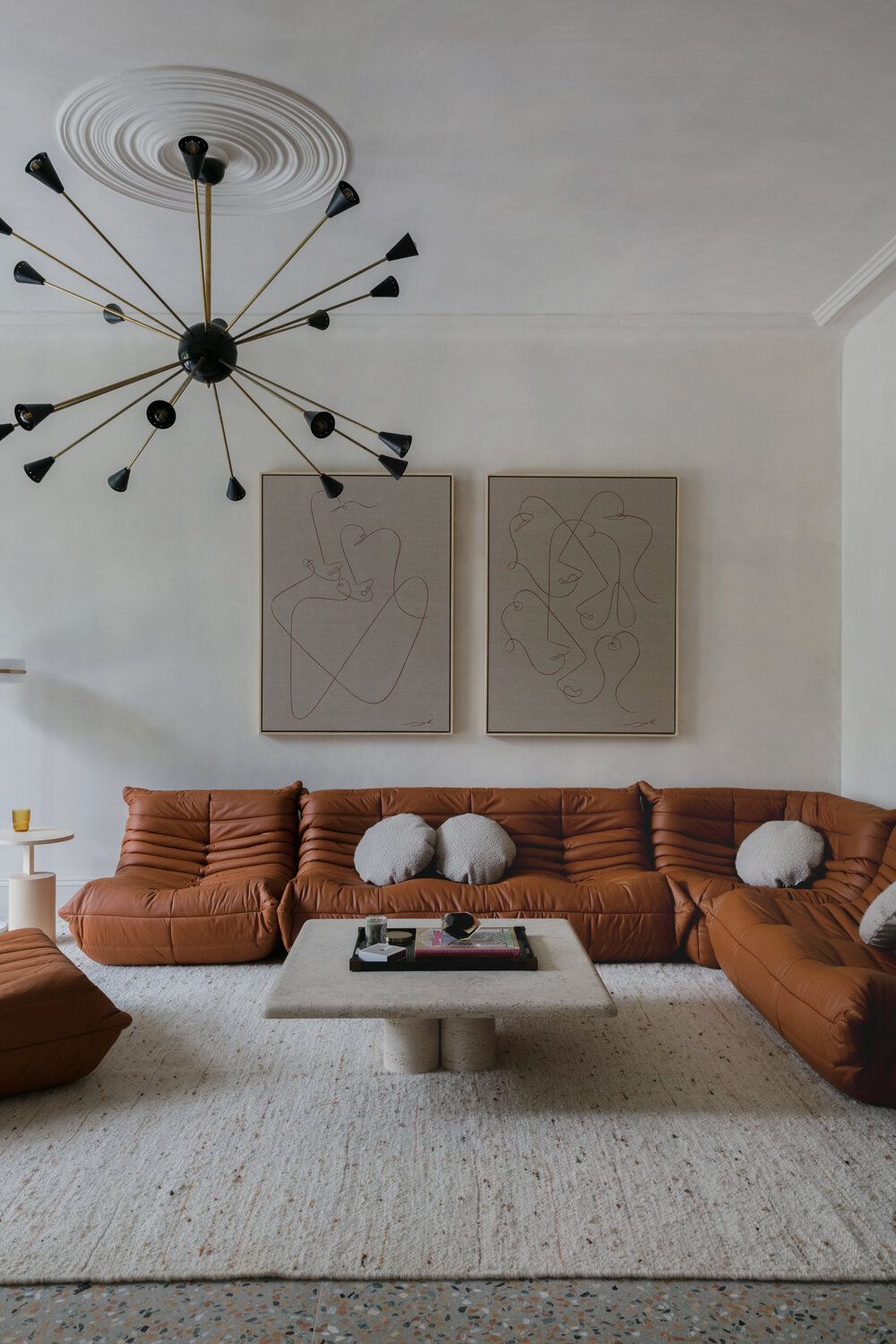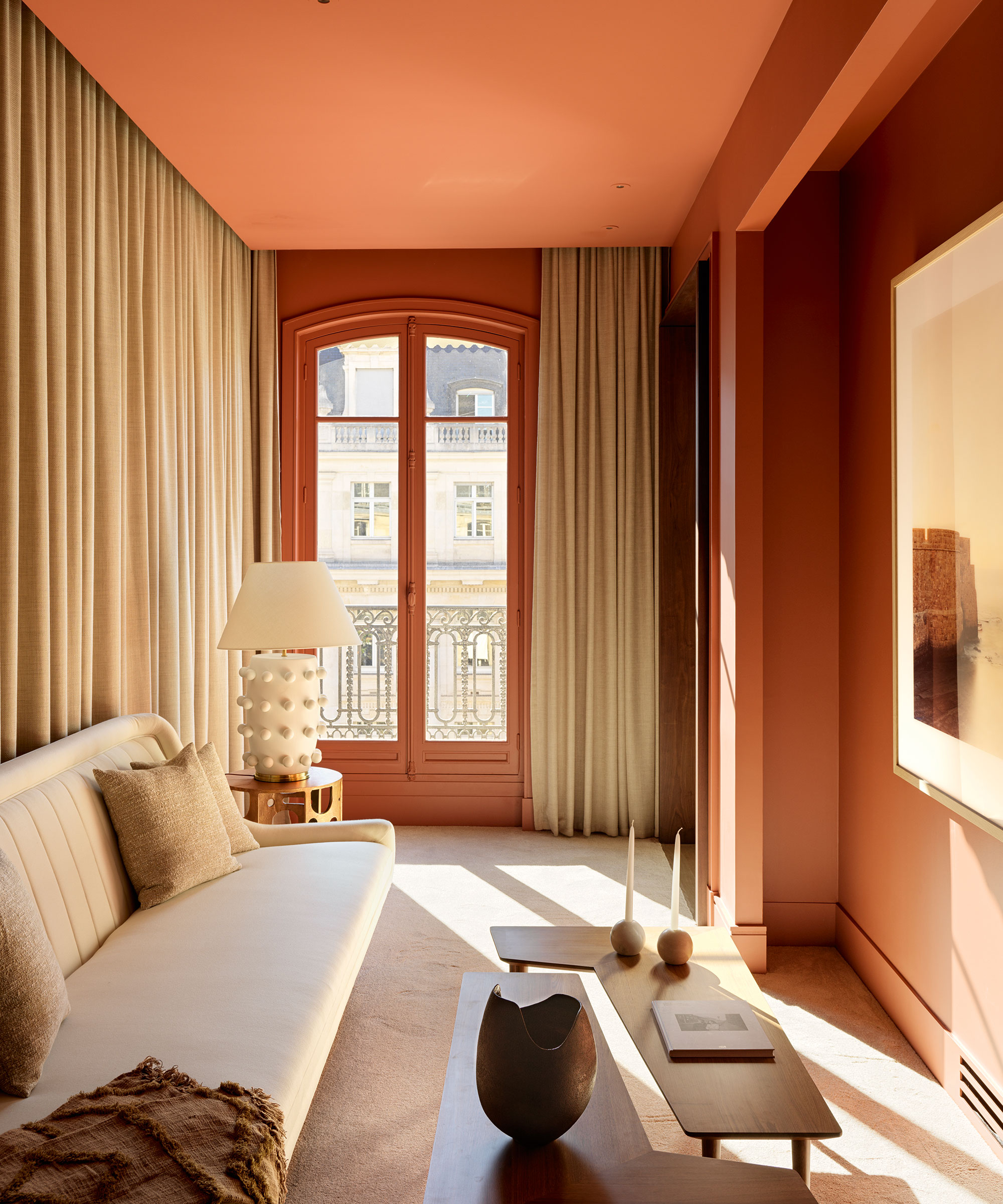
Retro home decor is characterized by vibrant colors and patterns, furniture from the 60s and 70s, and a big dollop of fun and nostalgia. Decorating with vintage and retro elements is all about looking to the past for interior design inspiration and curating purposeful items you genuinely love.
Ensure it stays sophisticated by choosing high-quality fabrics and furnishings that will feel opulent, and seeking out one-of-a-kind pieces from antique stores and flea markets. Retro is one of the most playful and joyful interior design styles, and it always makes a statement, even when used sparingly.
Incorporating some elements with a retro aesthetic – a 1960s lamp here, a David Hicks-inspired patterned rug there – never fails to create a space with more depth and interest, and a sense of a home and life well-lived and well-traveled.
8 retro homes that show how this trend is done
The key to doing retro home decor in a timeless way is to mix and match and keep to a transitional style. You might have a modern couch, but a thrifted coffee table, or a midcentury sideboard with a neon light hanging above it. Nods to the colors, patterns, and shapes synonymous with the retro design style will create a space that is just the right amount of eclectic – here's how to invite a retro vibe into your home.
1. Seek out midcentury furniture

The easiest way to dip your toe into retro style is by bringing some midcentury modern furniture into your space. 'Introduce timeless mid-century furniture pieces such as an armchair or sideboard to add some retro to your home,' suggests interior designer Sophie Clemson.
Blending design styles is encouraged – for example, you can place a midcentury credenza opposite a contemporary sectional sofa to create a visually appealing friction and an impression of a home that has been carefully curated. Similarly, a midcentury modern-inspired couch with tapered legs, at Burrow, or a 60s wooden TV unit will infuse some subtle retro flavor into your living room.
2. Choose retro decor you truly love

View a few retro, one-of-a-kind pieces as the sriracha of an interesting interior design scheme, and look for retro home decor that you genuinely love. 'I recommend investing in a couple of statement vintage pieces you love for each space,' says interior designer Leah Harmatz.
A 1960s fiberglass lamp inspired by the space exploration of the time could look great in a kids' bedroom, while an Eames lounger, Sputnik chair, and an orange Nesso table lamp made of molded plastic are design-forward additions to a living space or home office.
Leah Harmatz recommends collecting furniture and art from different decades to prevent a one-note or 'trendy' look. 'A juxtaposition of vintage and modern will keep it timeless. Try to find pieces that are originals and not copies or reproductions that are mass-produced – that will avoid overexposed trends,' she says.
3. Go for low slung seating

Look for furniture that's low to the ground for a casual, free-spirited aesthetic, and retro feel that will never date. There's just something about a low-slung couch or armchair that always looks effortlessly chic, and sofas like the Togo by Ligne Roset (pictured above), or even beanbag loungers, at Wayfair, remind us of the sunken living rooms or 'conversation pits' popular in the 70s.
Opt for a low profile sectional, available at Floyd, or if you want something a little daring, you could opt for a hanging pod chair or a day bed.
4. Choose a retro-inspired color palette

Retro color trends are having a revival right now, so repainting in a retro-inspired color scheme, (think red, orange, blue, pink or purple) is a good way to embrace a nostalgic interior but in a more transitional way. No one wants to be repainting every couple of years, so take interior designer Nina Lichtenstein's advice and opt for muted versions of retro colors like avocado green or mustard yellow on walls or throw pillows to create a subtle nod to the past. Dusk blue and pistachio also evoke the 50s.
To ensure your scheme feels cohesive, run the same color palette through different patterns, for example, you could use a mustard floral patterned wallpaper and a simple striped rug with mustard tones.
5. Buy furniture that's made to last

Inspect the craftsmanship and quality of items before buying, and purchase items from different eras for a more authentic feel. 'We tend to see images of the aspirational homes of the past, including the latest designer items and bright colors, when in reality most people's homes were not like that,' says Rachel Toy, vintage home and collectibles expert. 'They tended to include items acquired over a long period of time, as not much was thrown away and items were made to last.
'For example, a 1960s home it wasn't unusual to find old 1940s furniture or deco ornaments, kitchen items, etc. In a 1990s student apartment, the furniture would have been second-hand from the 1960s and 1970s. So to incorporate that style into your home, add in a mix of items from different eras, and those items should appeal to your own sense of personal style.'
6. Go geometric

Decorating with patterns and textures is crucial in any living space – a chrome armchair leg on a thick fluffy carpet or a checked throw pillow on a distressed leather armchair creates a lovely contrast. Nina Lichtenstein says the best way to do this is to pair a geometric patterned rug with a subdued, solid-color sofa, as pictured above. 'This gives you a balanced blend of retro flair and contemporary sophistication in your lounge area,' says Nina.
7. Embrace negative space

Retro is fun and impactful, but less is generally more, and it works best when mixed with more contemporary elements. To allow your retro home decor to shine, think about negative space in interior design.
The idea is to give decorative objects and pieces of furniture room to breathe, so they can be truly appreciated. Removing items and keeping a clutter-free vibe will prevent things from looking like an antique store. Think about natural pathways in your space, and bring in some neutrals if you're concerned that retro style is beginning to overwhelm.
8. Use rich wood tones

Embrace natural wood tones in your space, whether it be wall paneling, flooring, or furniture, and you'll create a space that feels both retro and grounding. Don't be afraid to mix dark woods with lighter or warmer-toned woods, as you can always use a buffer: for example, if you have wooden flooring and a wooden coffee table, place a rug on the floor to break them up.
Rich wood tones look great with other natural materials, such as wicker and rattan, as well as chrome, marble and transparent acrylic.
FAQs
What is the difference between retro and vintage design?
'Retro tends to be the more recent past, from the last 20 years or so. In 2024 that would be items from the early to mid-2000, but the lines tend to get blurred and vintage is sometimes called retro, and retro gets confused with vintage!' says vintage collectibles expert Rachel Toy. 'Vintage is technically a term for older items from the last 80 years, from the 1930s to the 1980s. Antique means items over 100 years old.'
Have fun with funky 70s glass pendants, optical, psychedelic artwork, and retro accessories that fill you with nostalgia. Interior designer Leah Harmatz shares a final tip for keeping it transitional and timeless: honoring the context of your building at the same time. 'I like to pay attention to the architecture of the home, and referencing the era in which it was built will ensure a cohesive and timeless interior,' says Leah.







